Just after 10 am on June 23rd 2018, Royal Australian Air Force Lockheed AP-3C Orion, serial A9-757, was officially handed over to the Darwin Aviation Museum in the Northern Territory, Australia.
The aquisition process has been a 2 year odyssey for the tender team at the museum, but all the hard work has finally paid off with A9-757 becoming the latest aircraft to be added to their outstanding collection.
Only the day before the ceremony A9-757 was towed into the museum grounds adjacent to RAAF Base Darwin by the members of Airforce’s JTF 639, after spending the night parked at the RAAF Base BRA apron.
Before reaching the gates, A9-757 had to be negotiated through a secondary access road due to some limited dimensions and with the outboard main tyres crossing the extreme edges of the last culvert (with supported matting in place), it made the last move up to the museum gates.
To access the grounds two security gates were unbolted and removed by the museum team before the Orion could be towed through the threshold. It was a great exercise in adapting to changing conditions and with slow and steady progress the JTF team negotiated the obstacles and the aircraft was parked in it’s new home and prepared for the upcoming ceremony.
The Air Force Duty Crew and Air Movements section has temporarily loaned a set of stairs until the museum can position their own historical set of Air Stars in position. They also provided some basic storage recommendations and tie down instructions until a hangar can be constructed over the Orion.
I enquire with a JTF Warrant Officer about what has been left intact and about the engine status. He explains that it is pretty much complete, less fuel and some sensitive and security related electronic equipment that has been removed, plus disabled engine fuel control – even for the APU. But ground power could possibly be utilised to run lights. The RAAF has been exceptionally helpful in preserving the aircraft until the hand over and and have also been forthcoming offering technical advice when asked by the museum.
At 10 am on June 23rd 2018, the start of the official handing over ceremony of A9-757 at the Darwin Aviation Museum in the Northern Territory, Australia, began just outside their huge hangar. In attendance were representatives from the Museum, Defence, Government, members of the AHSNT society and interested public.
First to take the podium was John O’Loughlin, Director of Disposals Projects who has been principle in authorising the disposal of A9-757. He makes a number of recognitions and introductions, then opens proceedings by saying,
“Today’s a good day for defence disposals, any day that we can preserve military history through the War Memorial, Service museums or local museums is a good day. I would like to thank my team and the team from the museum who have worked tirelessly to make this day happen, and all the paperwork and approvals that go on behind it.”
“Special mention must go to the members of JTF 639, who have preserved this aircraft for over 12 months. It would be in a very different condition if it wasn’t for their outstanding work.”
Mr O’Loughlin then goes on to introduce Air Commodore John Meier, Royal Australian Air Force, to say a few words. The Air Commodore has a loose connection with Darwin – as a young Officer he served with Air Vice Marshall Jack Plenty, son of Darwin’s Wng Cmdr (Ret) Ed Plenty – a great mentor at the old Darwin Aero Club.
“It gives me great pride and pleasure in my capacity as first Air Force Director General, History and Heritage, to hand over 757 behind me to become part of Darwin Aviation Museum. This is an important year for Airforce, its the 100th anniversary of the end of the 1st World War, 75th anniversary of the last major air battle over Darwin and the 50th anniversary of the first Air Force Orions.”
The Air Commodore goes on the describe some significant events around the Orions and in particular A9-757.
“10 P-3C’s including this aircraft replaced Neptunes at 10 Squadron in 1978, while 11 Squadron P-3B’s were replaced by another batch of Orions in 1984/85. Flying from the US, Canada and other places as part of cold war operations, the P-3 located, classified and tracked Soviet attack and ballistic missile nuclear submarines.”
“When Australia declared its exclusive economic zone in 1973, it was the Orion that gave Australia the ability to surveil a maritime area larger that the Australian landmass. In fact I have flown many of those surveillance missions in this particular aircraft.”
He continues detailing the various roles the Orion has performed from Operation Estes, which commenced in 1980, involving P-3s in round the clock surveillance of Bass Strait oil rigs against an assessed terrorism threat, to Malaysian based operation Gateway which continues to this day tracking submarines and conducting intelligence gathering and reconnaissance operations.
In addition the P3s have been involved in countless rescue operations at sea – the rescue of solo yachtswoman, Isabelle Autissier”
“757 in particular has a varied and auspicious history – the aircraft began its service with No 10 Sqn in November 1978 at RAAF Base Edinburgh. In 1984 the RAAF deployed 4 Orions, including 757, to the Cocos Islands where they gained imagery of a previously unseen Russian BOR-4 spacecraft that splashed down 300 miles to the south. It was the first time it had been seen by the west and those Orion photos were distributed to all our western allies – a real intelligence coup”
“In 1983 this particular aircraft was the first of the P-3C’s to participate in the international anti-submarine exercise called Fincastle, where we compete against the Brits, Kiwi’s and Canadians to see who has the best skills on anti-submarine and anti-surface warfare. Again this aircraft was the one of the first aircraft where we carried out anti shipping mine exercises of dropping inert anti-shipping mines at Lake Hart near Woomera.”
From November 1998 to June 2000, 757 flew 17 missions out of Malaysia in support of Operation Gateway. In 2000 A9-757 carried out coastal surveillance patrols around Australia’s fishing zones, the third largest in the world, covering some 9 million square kilometres, many of those mission out of Darwin.
In 2011 757 was the first P3 to deploy to Learmonth as part of Operation Relex, the ADF’s enhanced border protection operation in the country’s northern approaches. Between May 2012 and march 2017 757 carried out multiple surveillance missions as part of Operation Resolute, the ADF’s contribution to protect Australia’s economic zone – most of those missions were flown out of this base. So 757 has a very long and close tie to RAAF Base Darwin and the Territory.”
“Throughout its service with the Air Force, 757 has optimised the flexibility of air power and with more than 17,000 flying hours, divided by 24, that’s a lot of days in the air. The legacy of this grand aircraft will be preserved for many more years beyond its normal operational service.”
“As Director General History and Heritage I applaud Darwin Aviation Museum and the NT Government’s efforts to explore and document WWII aircraft crash sites, including the recovery and preservation of aviation relics related to the defence of Darwin, and the air battles over Darwin during the Second World War. The preservation of the F-111 just inside the hangar is of world standard and I know that 757 will be well looked after. By supporting quality heritage organisations such as Darwin Aviation Museum, with the gifting of heritage aircraft and artefacts, the Airforce shares a record of Australia’s air power throughout it’s history by presenting a physical and touchable expression of how the Airforce has developed it’s capability in order to defend Australia’s interests. The educational opportunities provided in the Darwin museum are significant and have a profound influence on how people connect with and understand howe the Australian Air Force behaves operates both in peacetime and in wartime and in particular the defence of the Northern Territory. So it is with great pleasure and to be honest, a fair amount of nostalgia, that I hand this magnificent aircraft over to Darwin Aviation Museum for preservation, education and community enrichment…Thank you very much”

President of the Darwin Aviation Museum – Tony Simons “This is and absolutely wonderful day as far a the society is concerned”
The Museum’s President, Mr Tony Simons takes to the podium to make an acceptance speech;
“This is and absolutely wonderful day as far a the society is concerned – a culmination of two years of long and hard work by our committee and the involvement of Defence Disposals and must acknowledge the museums manager Angie Clucas, curator Ken Lai and John O’Loughlin from Defence Disposals”
“Our next step is to get this magnificent aircraft under cover and we will continue our negotiations with the Federal and Northern Territory Governments to get an extension to our existing hangar”
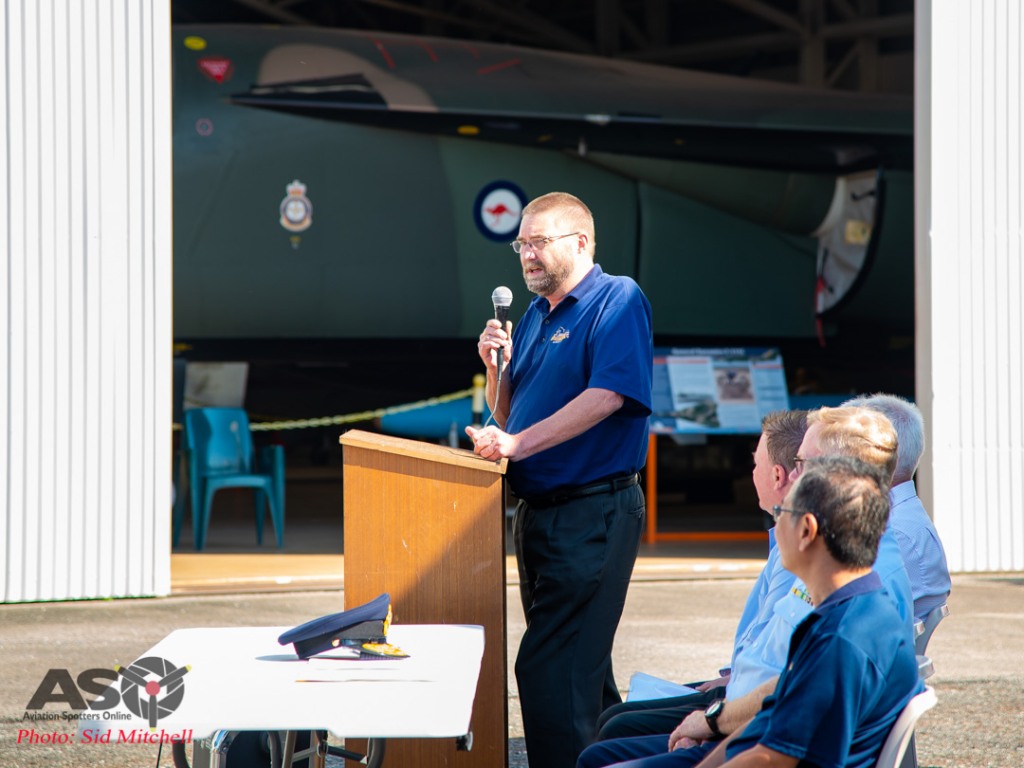
“We have been very fortunate to retain our visitation rates at around 30,000 and to be able to acquire exhibits like this only continues to enhance our reputation as an organisation and make the experience for our visitors even better.”
The Assistant Minister for Veteran Affairs Tony Sievers and Member for Solomon, Luke Gosling make their speeches reflecting on the Northern Territory and it’s long standing with all branch services of the Australian Defence Force – from the tragic bombings of Darwin to modern exercises both on land near Darwin and offshore to the north.
There is a short break as the signatories prepared for the official handover document signing.
Air Commodore Meier, Minister Sievers, Museum President Tony Simons and witness, Member for Solomon Luke Gosling, all sign and then pose for photographs in this historical moment for the museum.
It is a proud moment for the Darwin Aviation Museum and a moment in history that marks yet another retiring Lockheed Orion making the transition to preservation in Australia, as apposed to what fate it may have had in store otherwise.
With the official ceremony over the public are allowed to climb the stais and wander through and about the Orion.
The Air Commodore escorts Wing Commander (ret) Edwin Plenty – Honorary Member of the museum, an ex RAAF Canberra pilot/instructor, and Commanding Officer of Base Squadron Darwin during the 1970’s. He has had a long connection with the RAAF and the Aviation Historical Society of the Northern Territory and graciously accepted the Committee’s offer to become the patron of the AHSNT back in 2016.
Through the door hatch straight ahead you can see the floor level sonobouy tubes and starboard aft observation position – to the right is the other observation position. The seats are fully adjustable and fitted with lambs wool – as are all seats in the Orion as many long hours can be spent in them.
Behind them is the crew rest area and galley – including dinette style seating, table and bunks with strapped in mattress and pillow. Often the promise of a hot meal and a break from the monitoring must be welcomed at times on long missions.
Turning forward to the main cabin you can see sonobuoy storage racks – the Orion can carry both active and passive sonobuoys and Marine markers. Escape hatches are located left and right and interestingly noted by a few observers today, a parachute stowage bay which is also present elsewhere in the aircraft.
Further forward again and the Sensor Stations SS1-SS4 and SEM positions are located down the port side – these are the Airborne Electronic Analysts (up to six) and the Sensor Employment Manager positions. Each station has its own monitors and they utilises a clever suite of sensor arrays to collect and process information about the threat or target environment.
The Orion crew uses it’s digital Multi-mode Radar, IFF, Electro-Optical Infra Red Star Saffire II system, Acoustic Sonobuoys and Magnetic Anomaly Detectors. The digital MAD boom is the distinct and easily recognisable tail extension to the AP-3C .
Moving forward you come to the next crew position on the left side, the Tactical Coordinator, who is responsible for co-ordinating the various tactical aspects of the mission. The TACCO role is fed information collated by the AEA’s and SEM in the cabin behind.
The Navigator/Communication Officer sits to the right and manages the aircraft radio’s, and communicates with other airborne assets as well as those on the ocean surface or ground elements. The NAV/COMM also coordinates navigation of the aircraft during each mission.
Both positions also have domed observation windows to assist in visual identification of vessels such as in Search and Rescue operations. Below these crew positions is the weapons bay which can carry and dispense a variety of stores including the Mk 46 lightweight anti-submarine torpedo and Air Sea Rescue Kits. The Orion is also capable of deploying the AGM-84 Harpoon anti-ship missile.
Looking towards the cockpit the third seat of the Flight Engineer sits between the Pilot and Co-pilot – there is also a second FE normally on board, often a welcomed second set of eyes we are told by the Air Commodore. The FE monitors the aircraft systems including the four Allison T56-A-14 turboprops that give the Orion that distinctive drone. No 1 engine can, and often is, shut down during patrols increasing the loiter time, range and efficiency of the aircraft over many hours of patrolling the oceans. Many think of the Orion as sea orientated aircraft but it is just as capable of performing the land surveillance role.
The main and overhead instrument panels have all their electronic flight instrument system (EFIS) displays, standard instruments, switches, indicators and levers in place with only a few missing items from the centre pedestal. The side panels have some missing components that will be easily blanked off by the museum.
There is very little missing inside to the casual observer and the few actual missing panels can be easily be replaced with mock ups, which are already being discussed by museum staff. The cockpit is in very good condition for its age, as is the rest of the aircraft – both inside and out – quite amazing for a 1978 Orion. This is a true credit to the 92 Wing maintenance crews at 10Sqn, 492Sqn and the JTF 639 team at RAAF Base Darwin.
I get another chance to wander around the aircraft as the crowd disperses and have a chat with Ken, the museum’s Curator – He is very excited about the new arrival as so much hard work has gone into securing 757 and the preservation plan is only just starting to swing into action. A9-757 will take position front and centre in the outside aircraft parking area, before ending up under cover with a proposed 40m x 60m hangar.
Wandering around I notice a number of ‘zaps’ – Canada, Japan and USMC just a few – simple spray-painted stencils or stickers from other nations sneakily applied during exercises – and yes – the ADF also takes part in these harmless activities as it is all part of the comraderie between competing nations.
So for the time being it is hard not to miss seeing A9-757 from the museum grounds, or even the Stuart Highway if you happen to be passing by.
It is a credit that another museum in Australia has had the opportunity to secure and display a long lived and historical Intelligence, Surveillance and Reconnaissance and Anti Submarine/Shipping Warfare aircraft such as this Lockheed AP-3C Orion.
I would like to thank Tony, Ken and Angie from the Aviation Historical Society of the Northern Territory for allowing me to share in this special day with the Museum, Royal Australian Air Force and Defence Disposals. I look forward to many hours ahead at the museum and meeting other members of the society in the near future.
If you would like to see what is on offer at the Darwin Aviation Museum, please right-click-open on the link below, and if you are ever in Darwin, make sure it is on the bucket list – well worth the visit.
https://www.darwinaviationmuseum.com.au
Cheers Sid Mitchell
Aviation Spotters Online – Darwin
My gear I use is Nikon D610, D700, Nikon 24-120mm, 70-200mm, 200-500mm and Sandisk extreme cards.

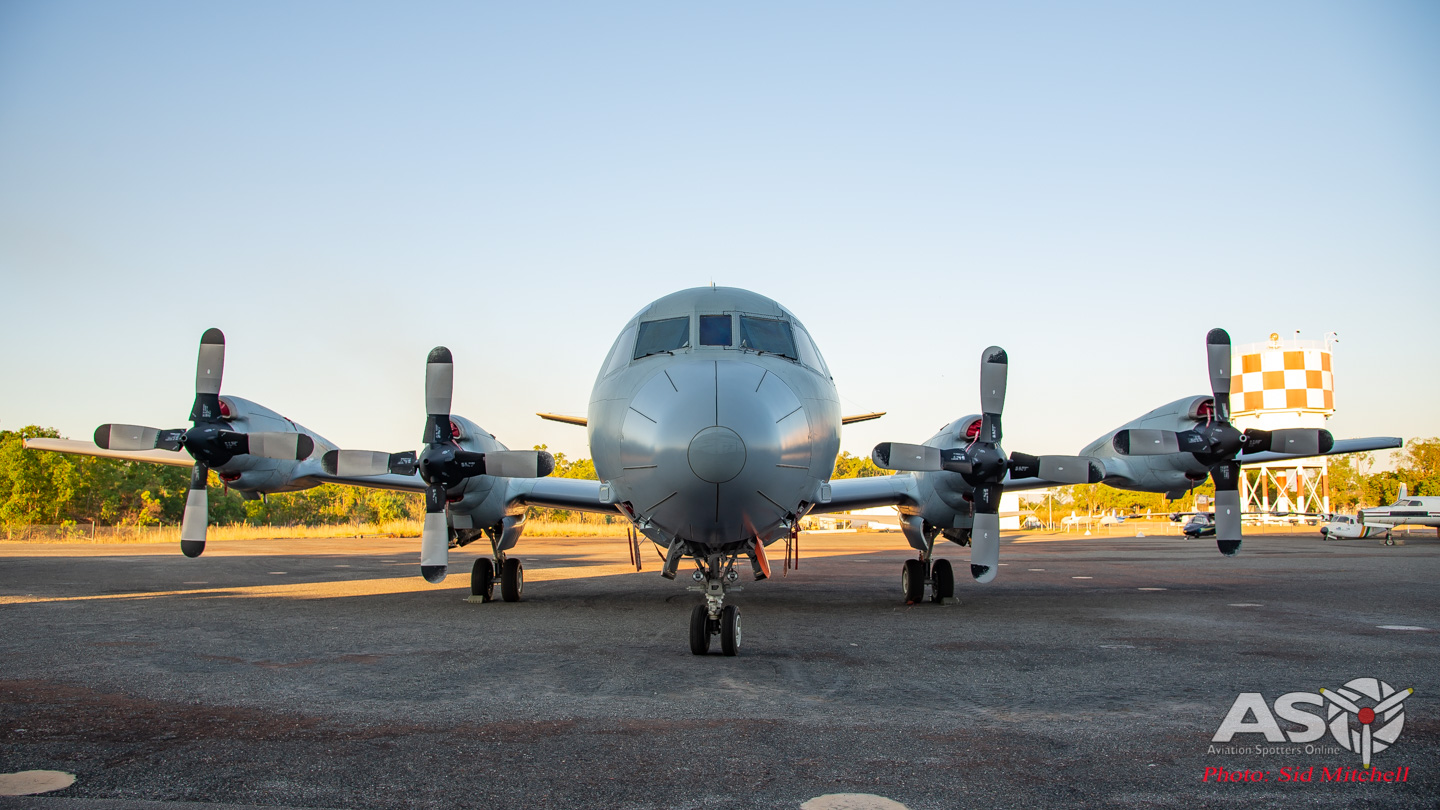
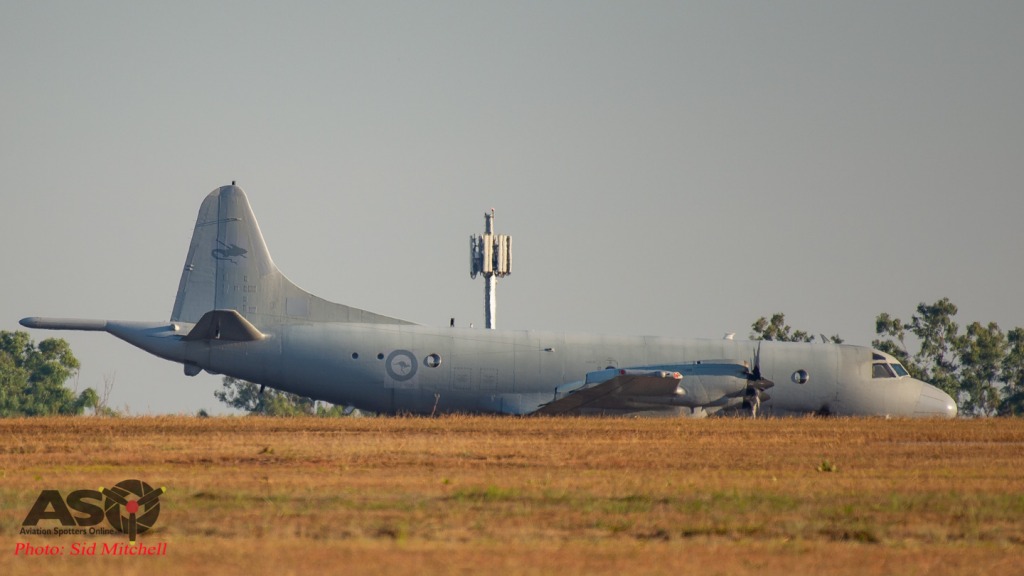



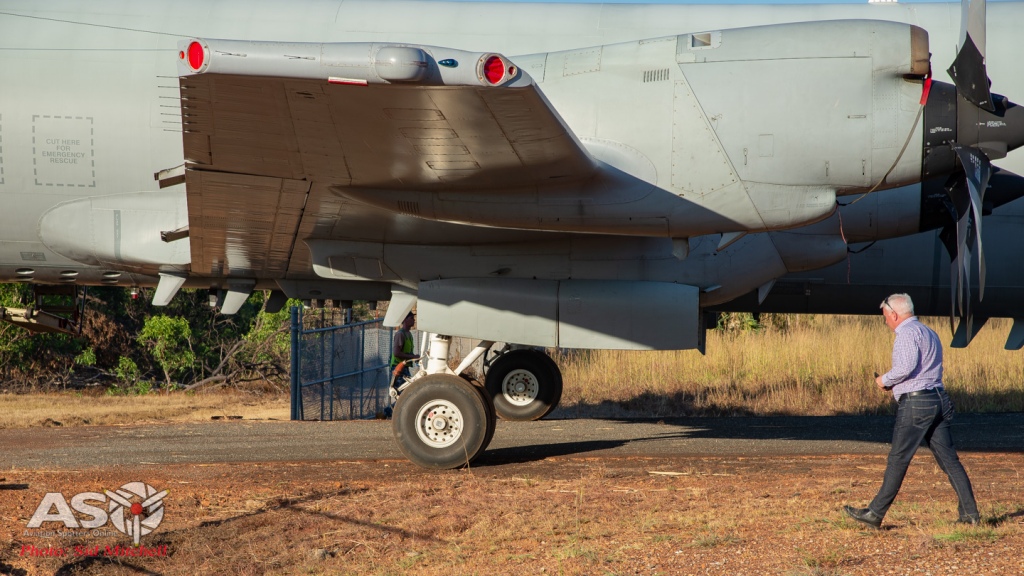
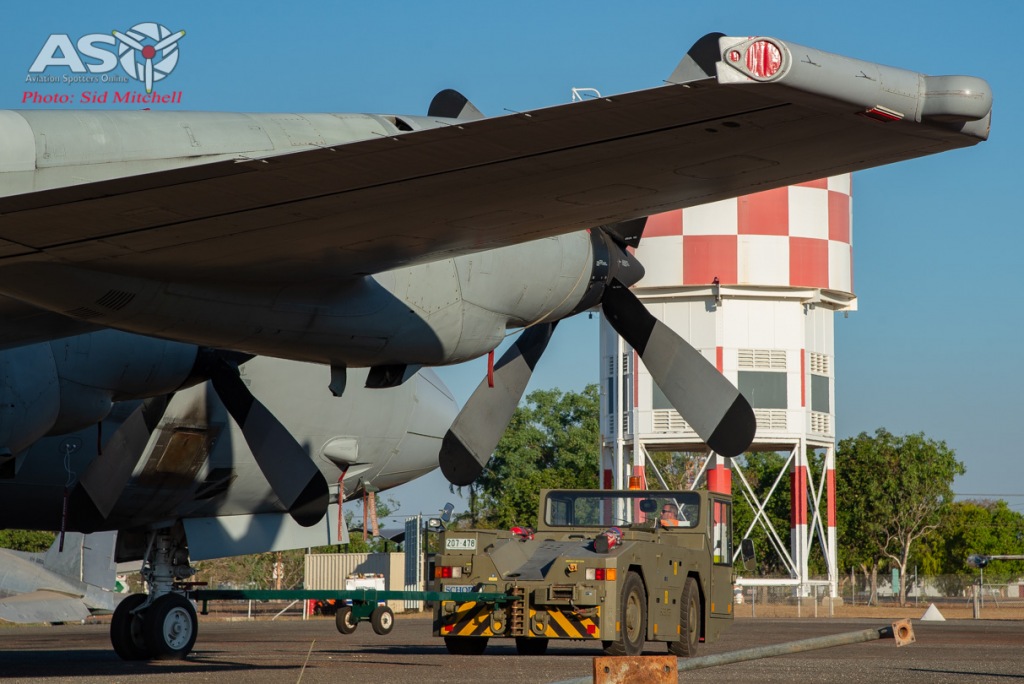
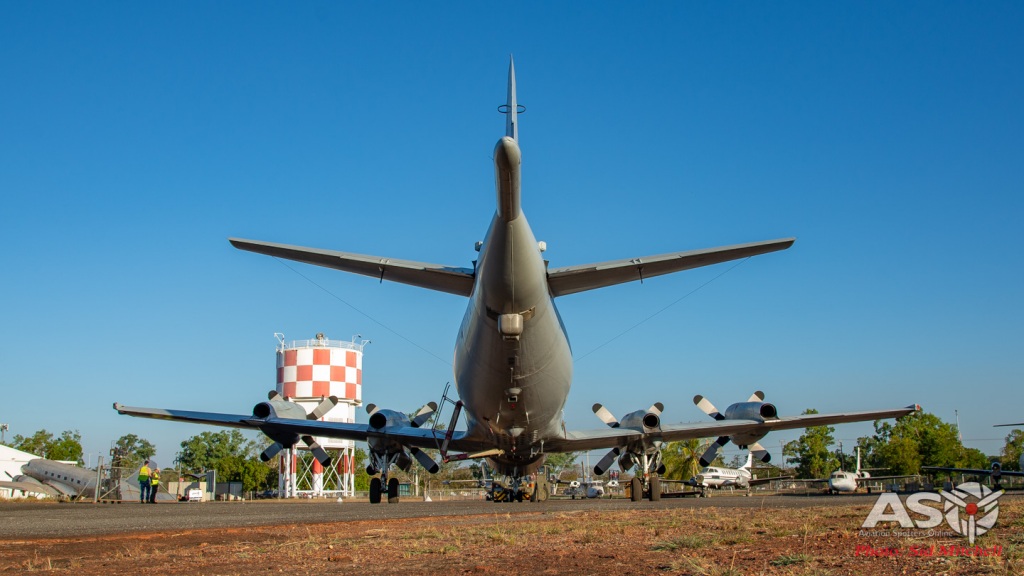
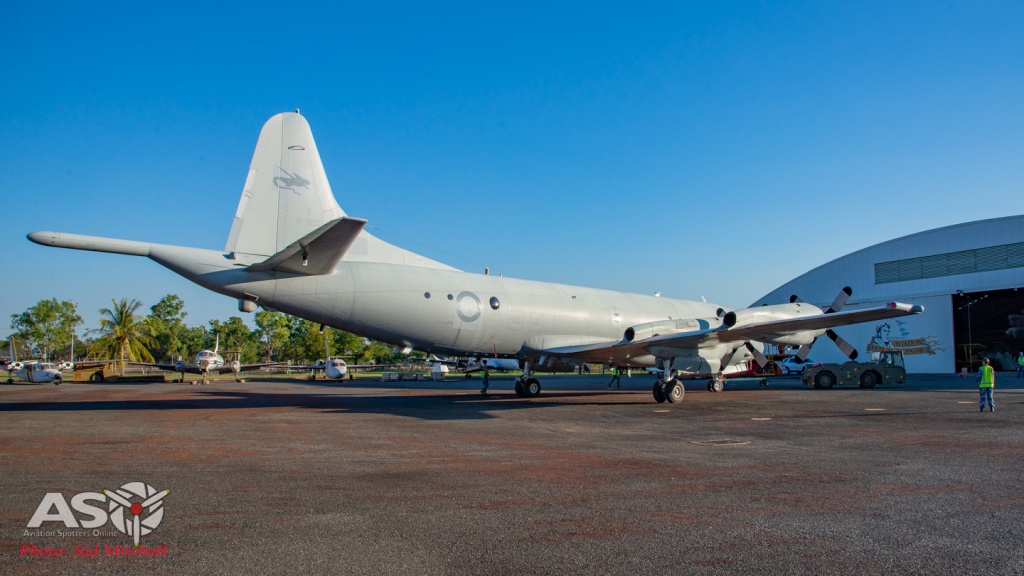

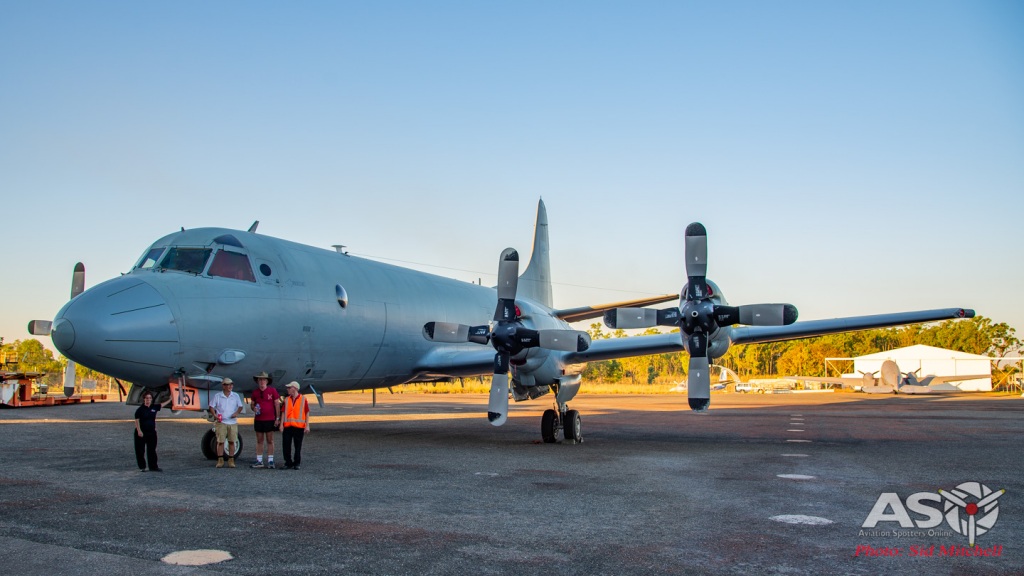
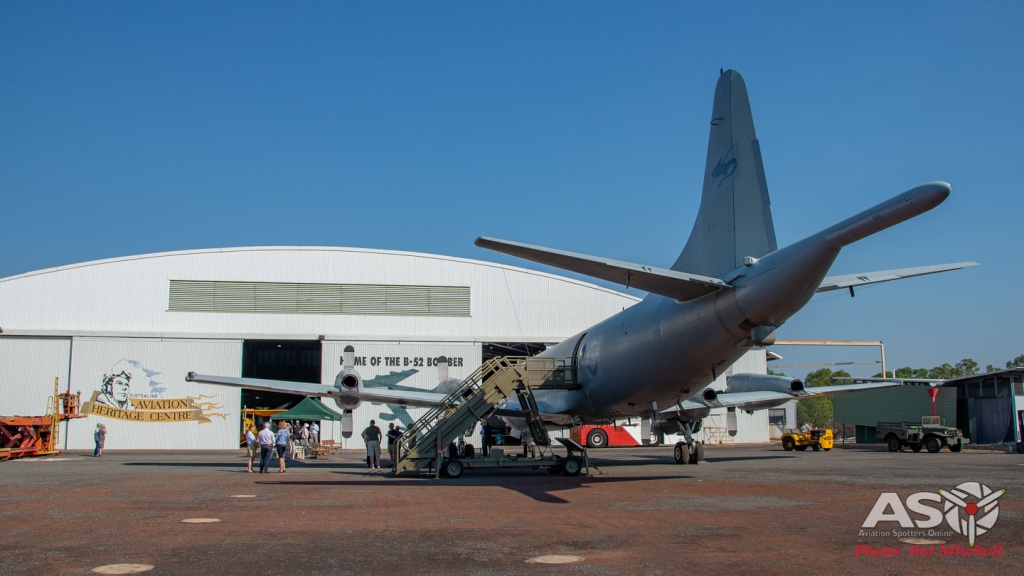

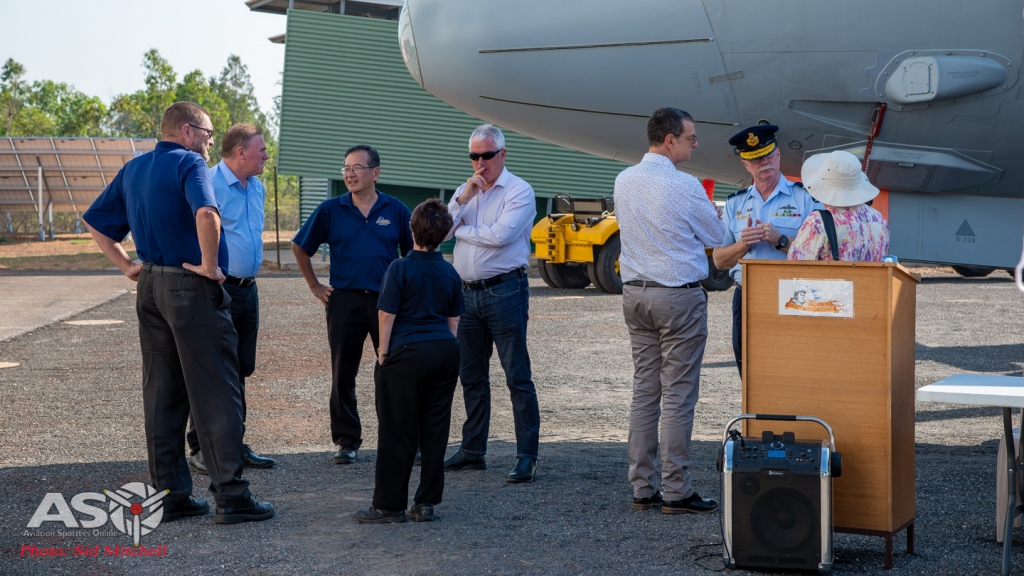

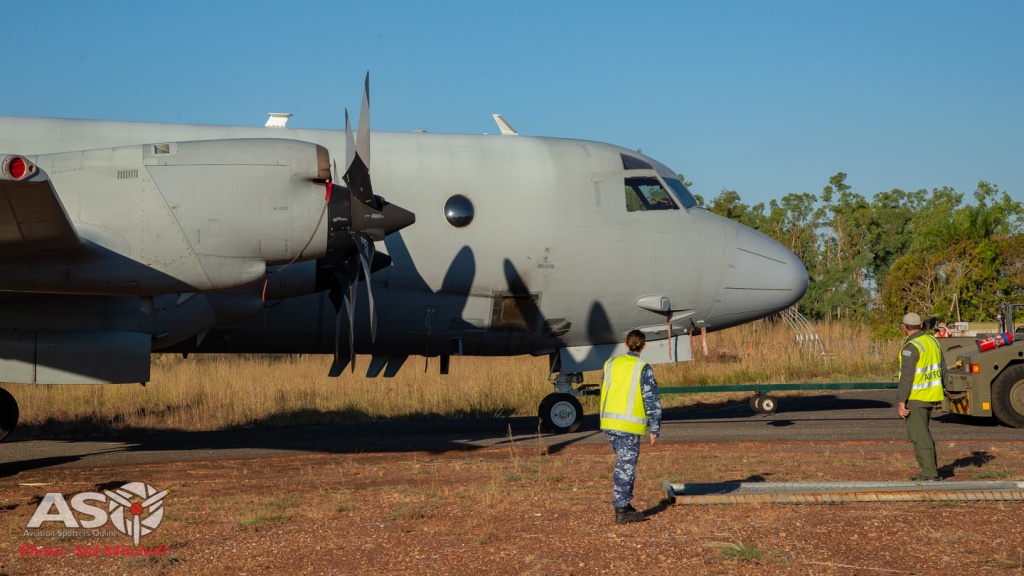




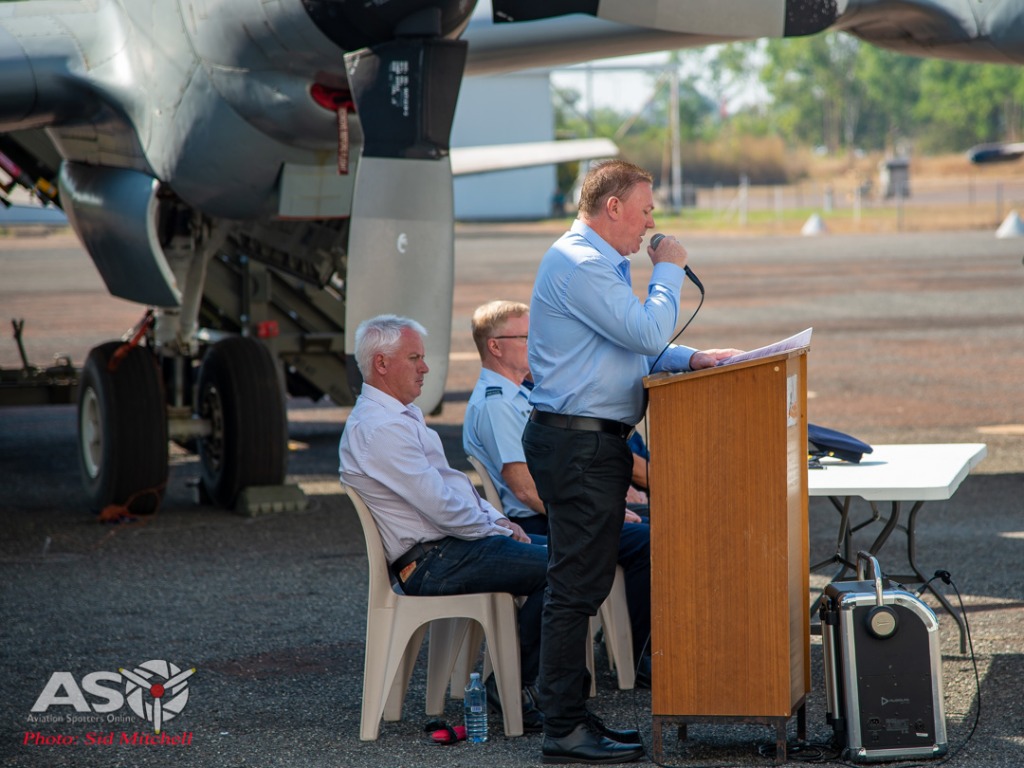
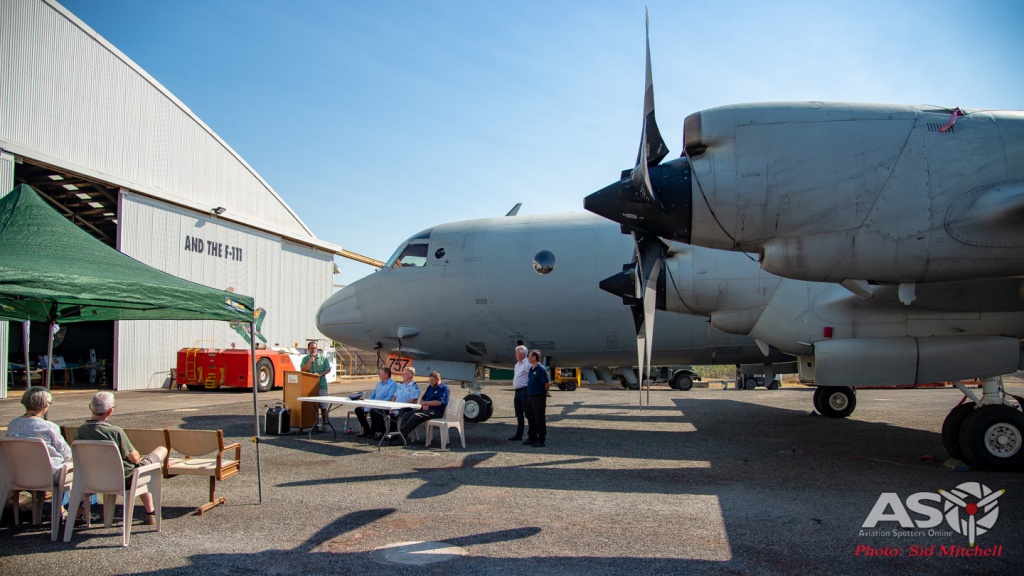
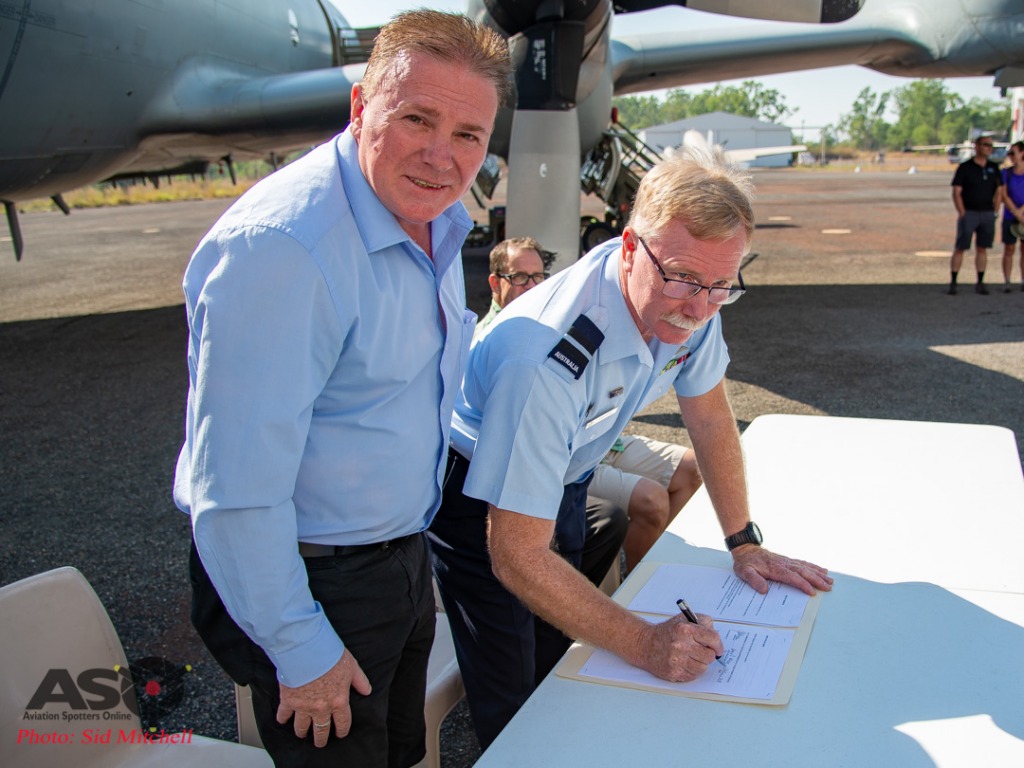
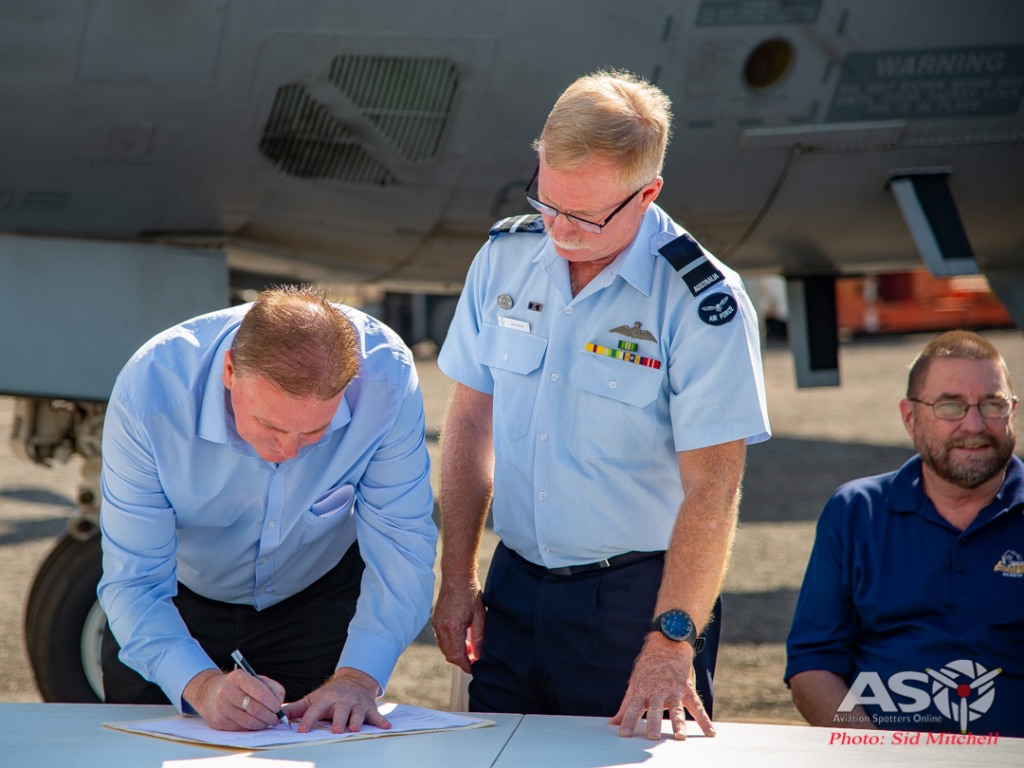
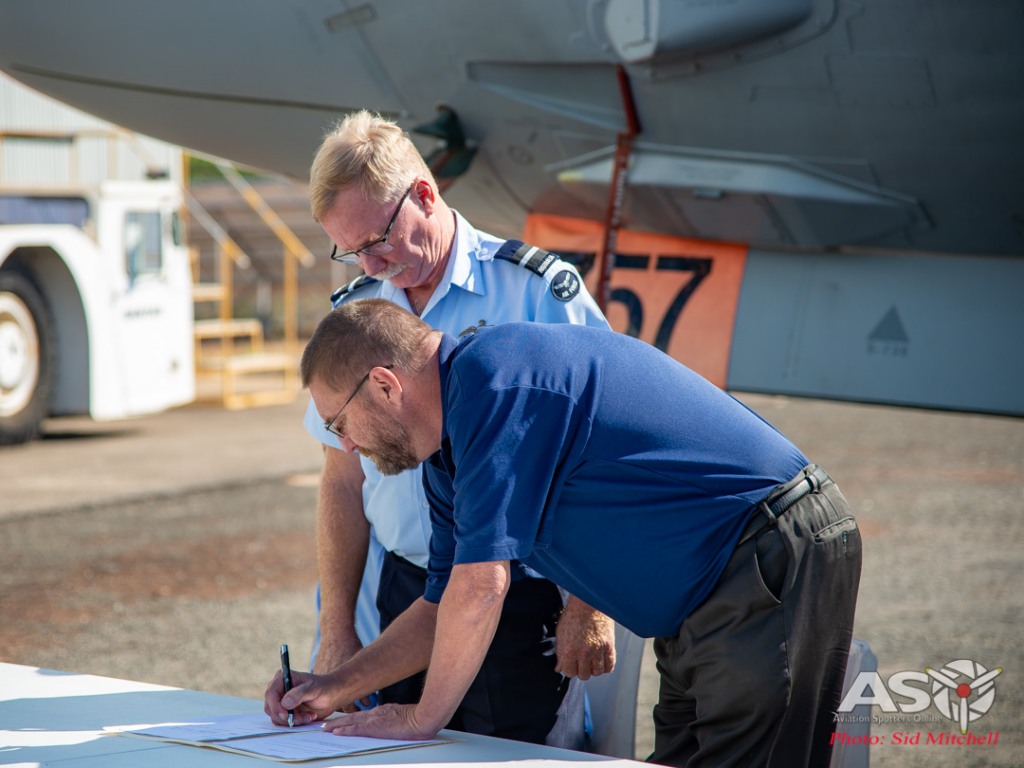


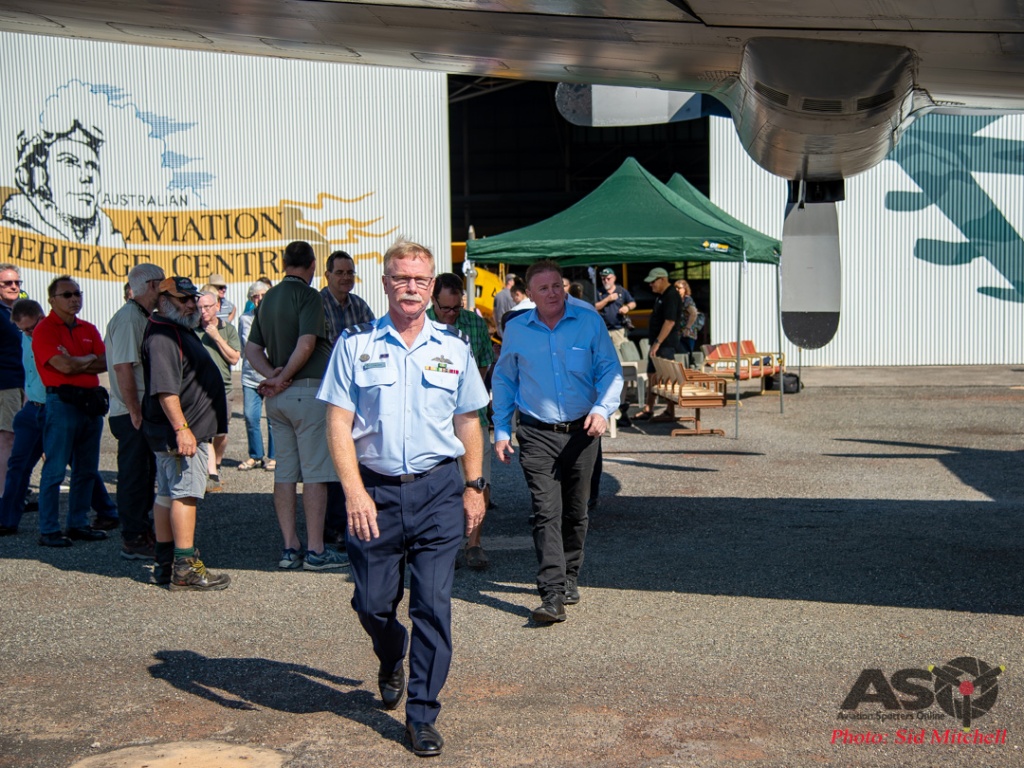

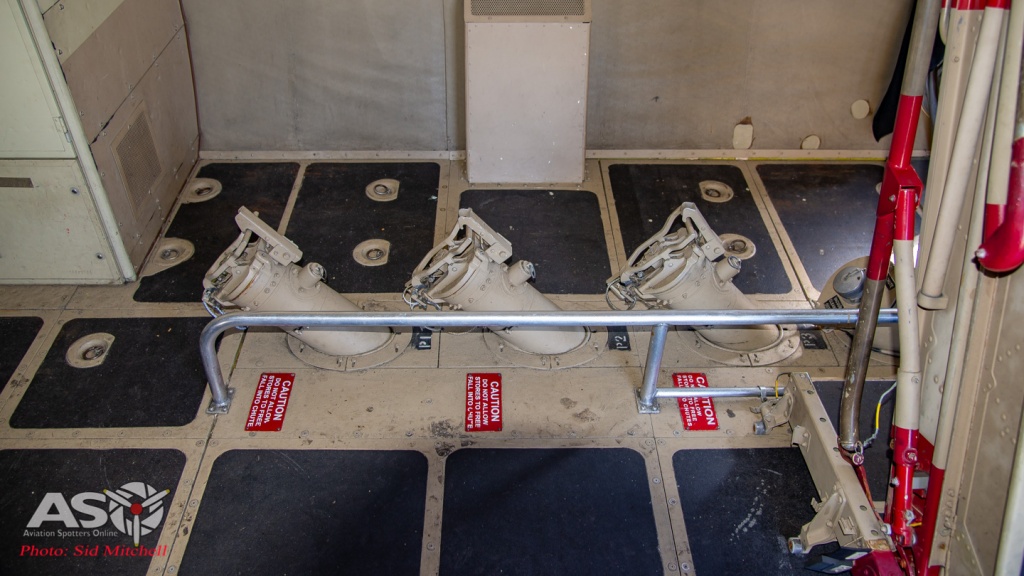


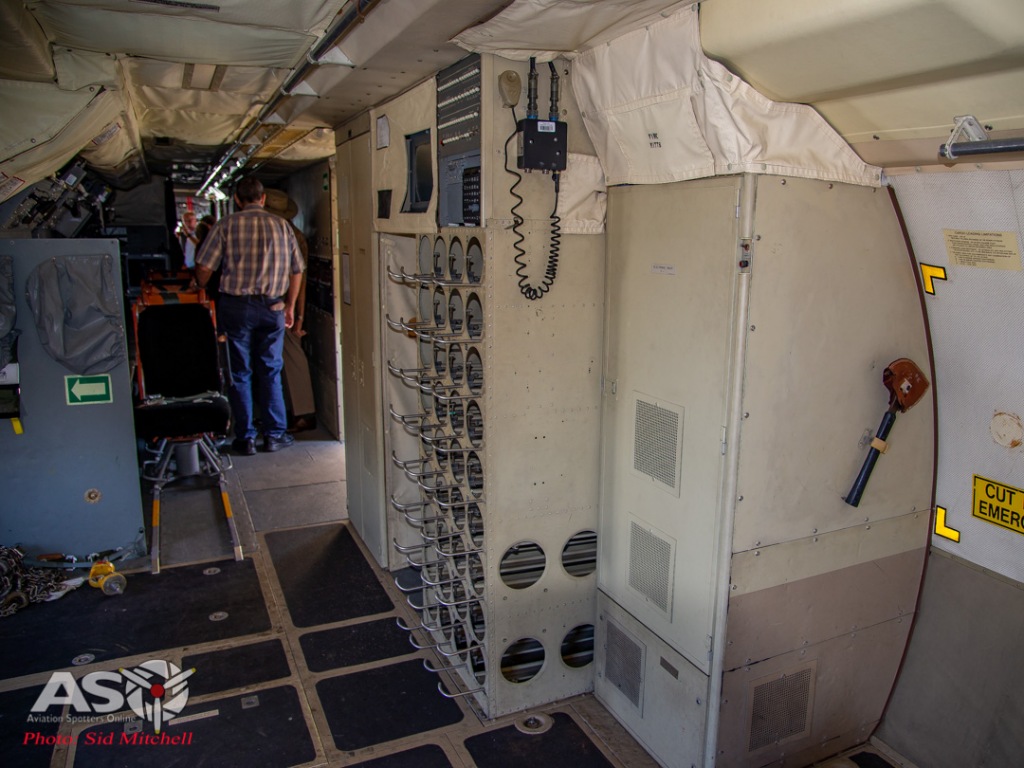
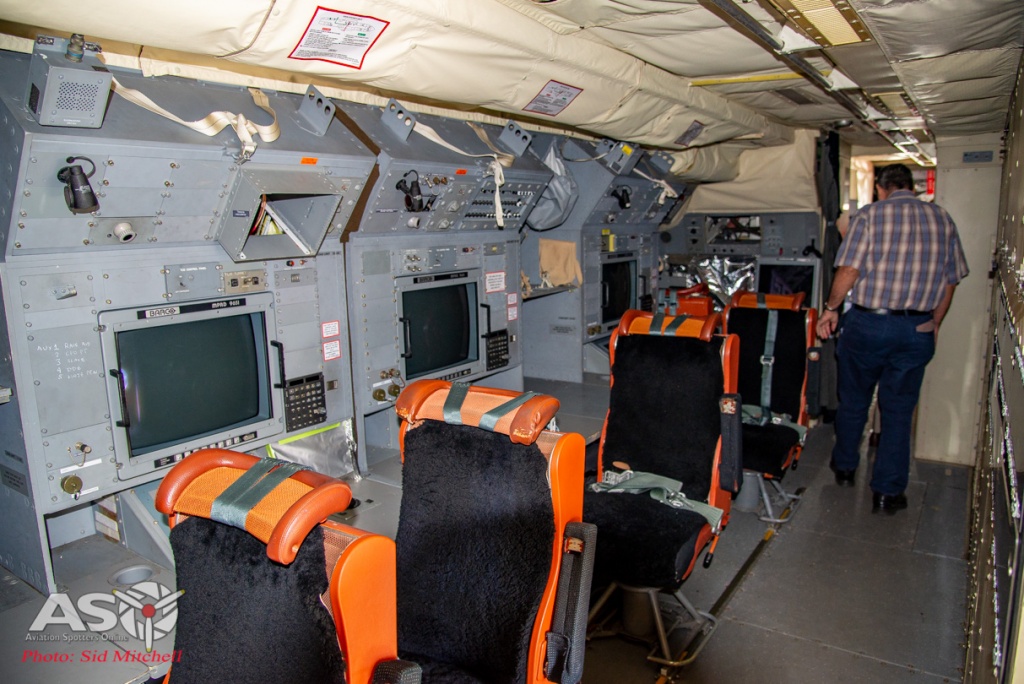
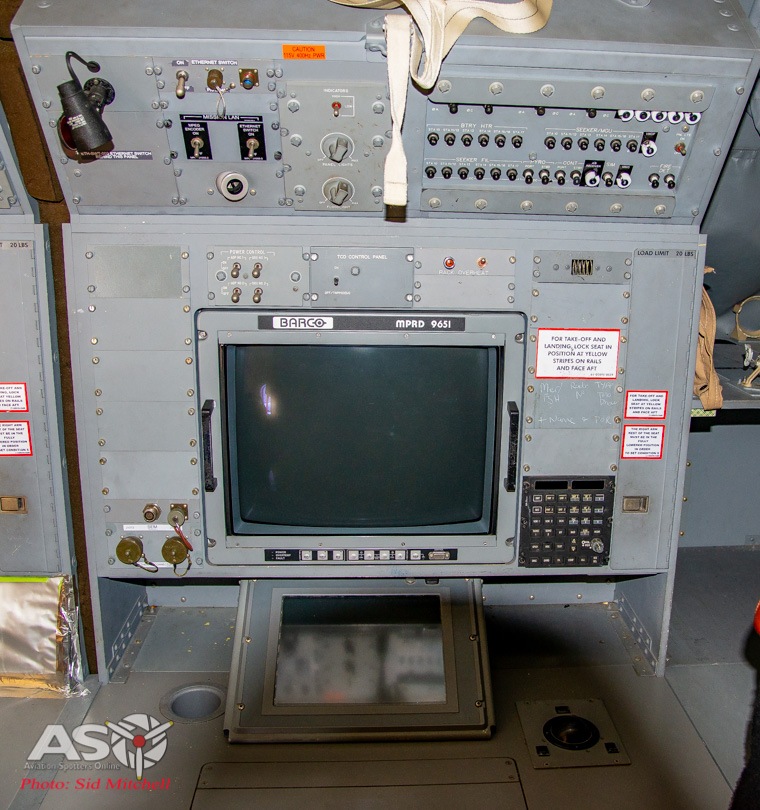
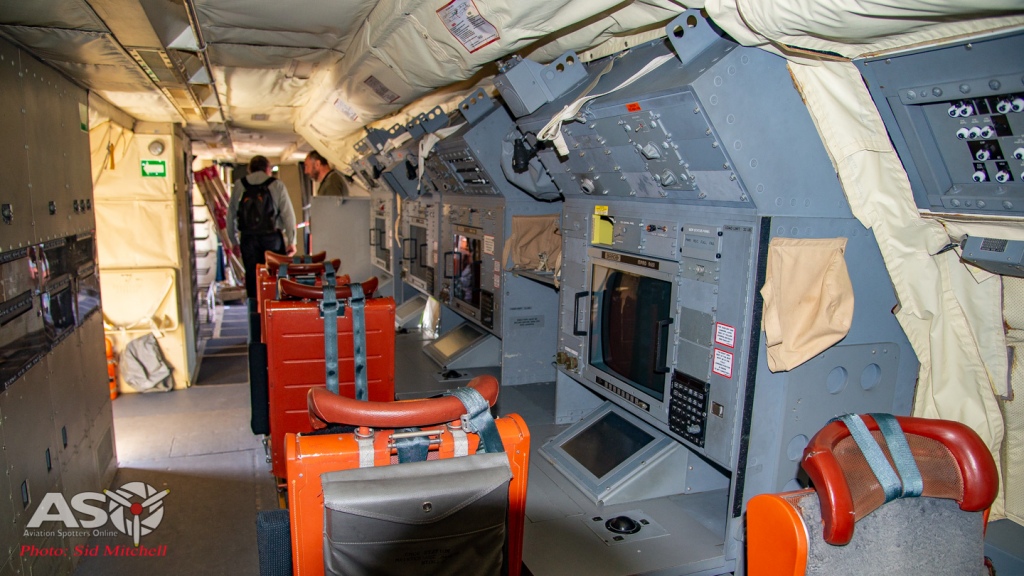

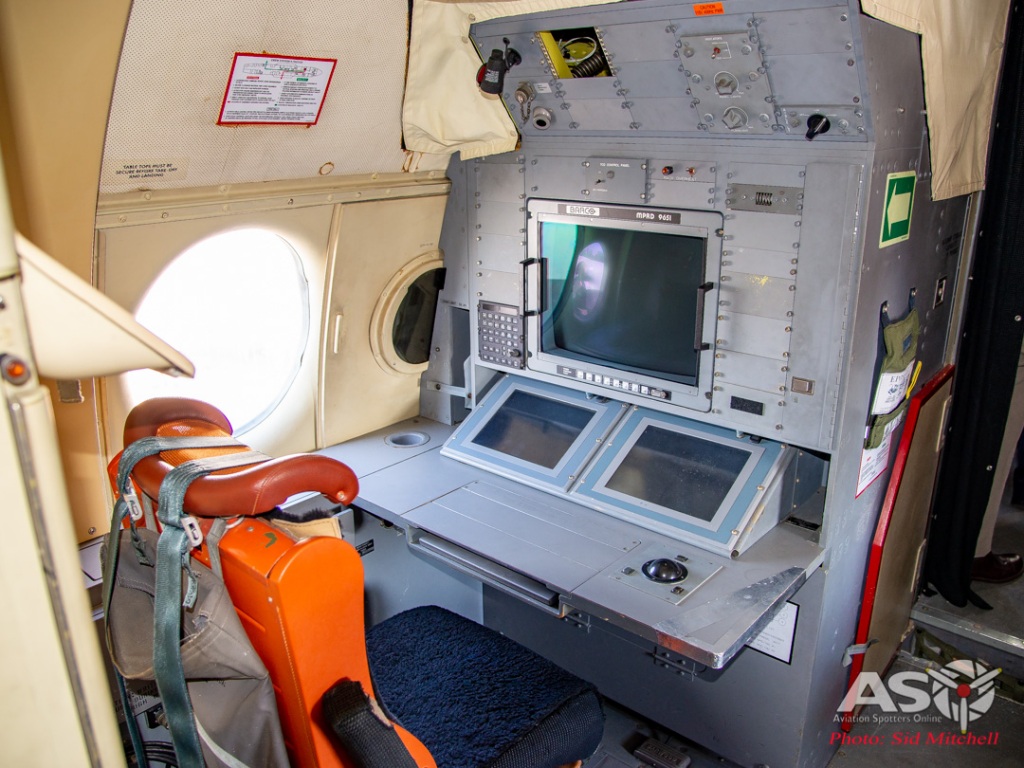


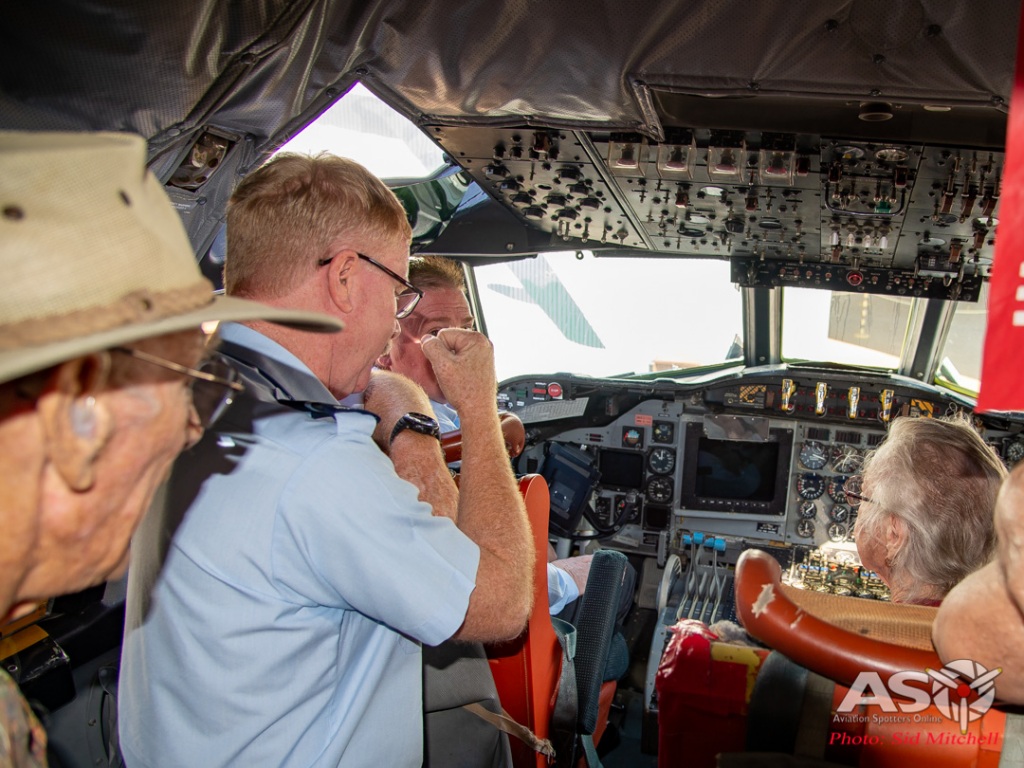

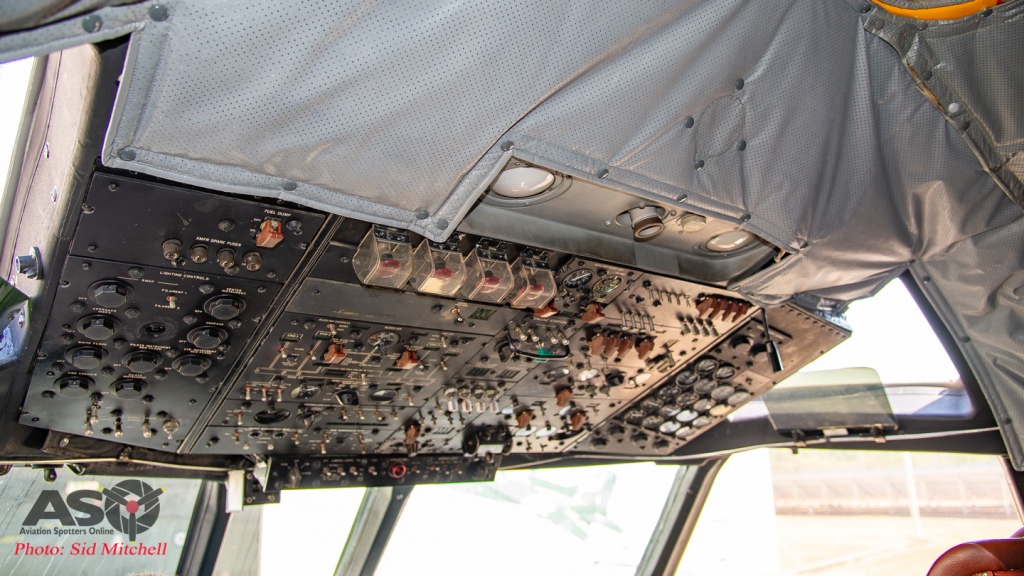


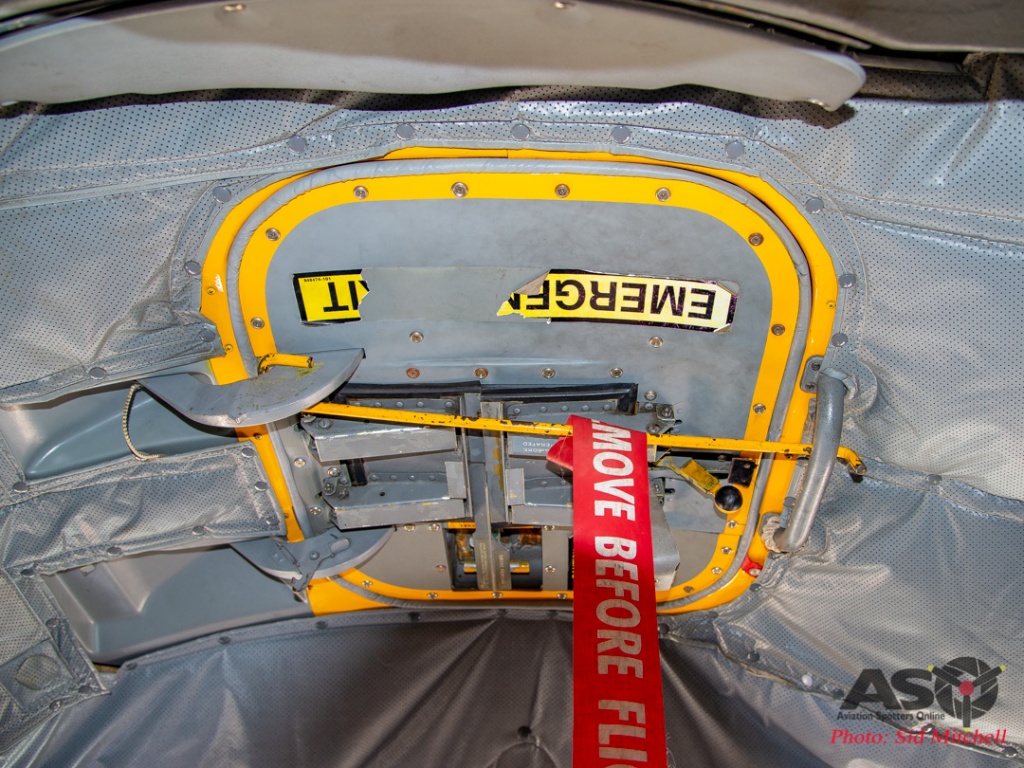
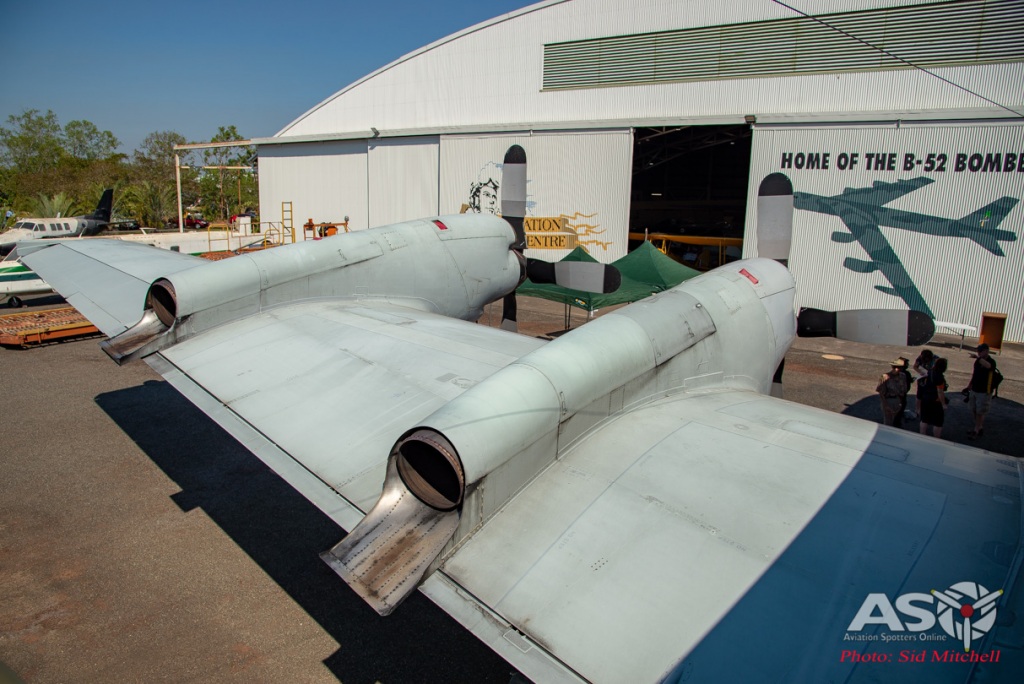
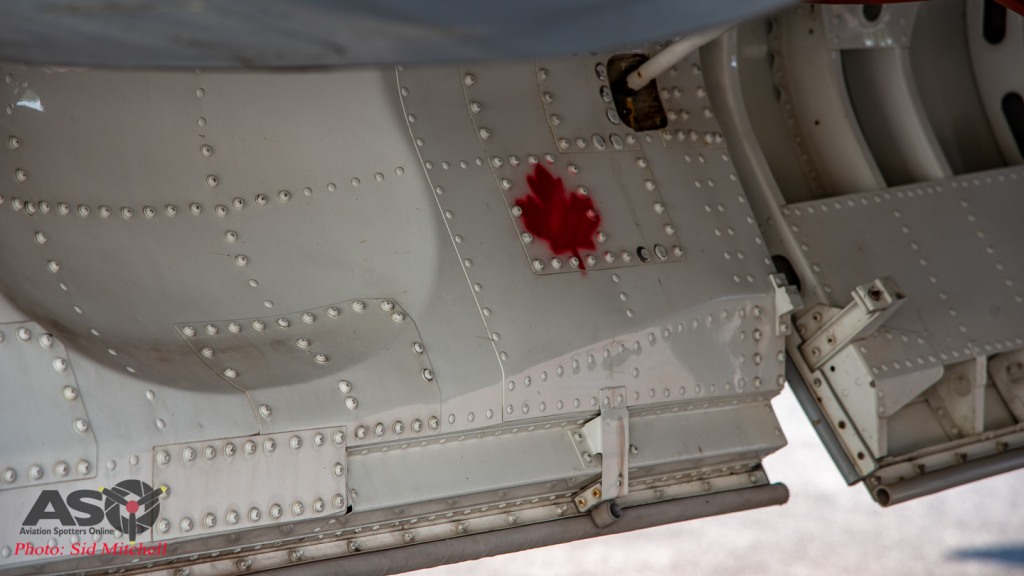
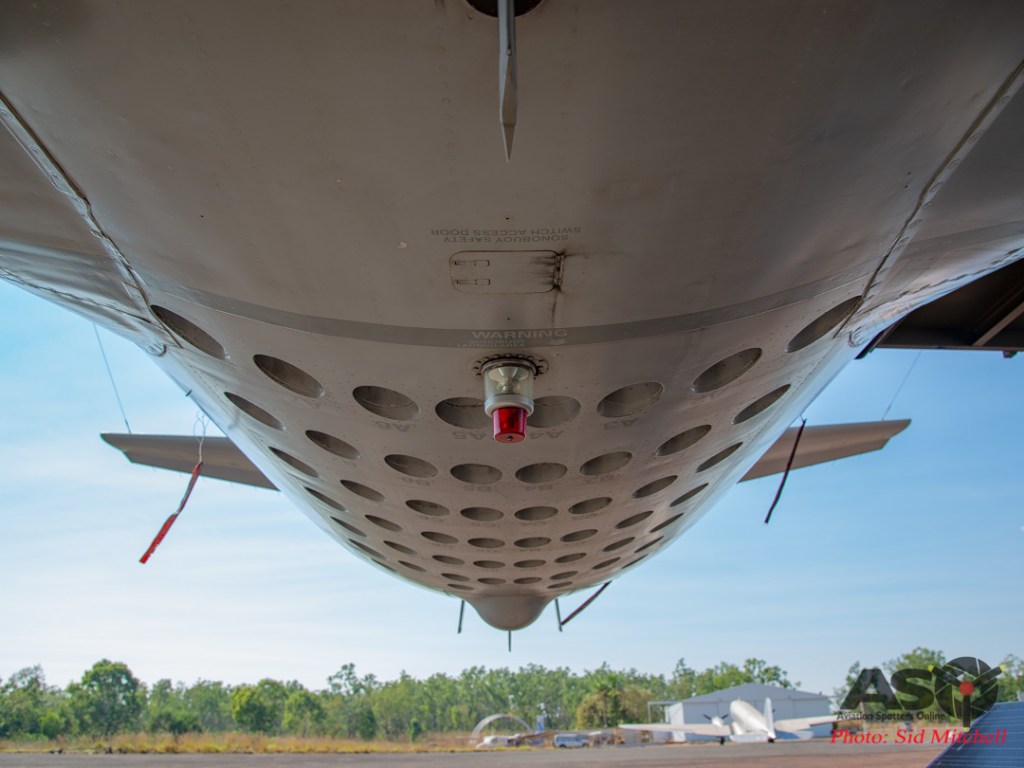



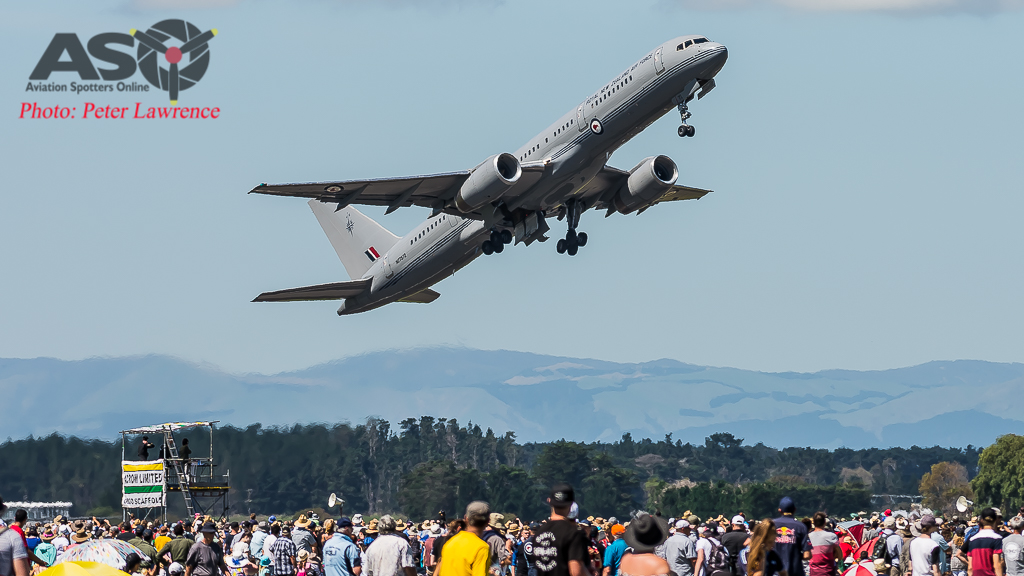
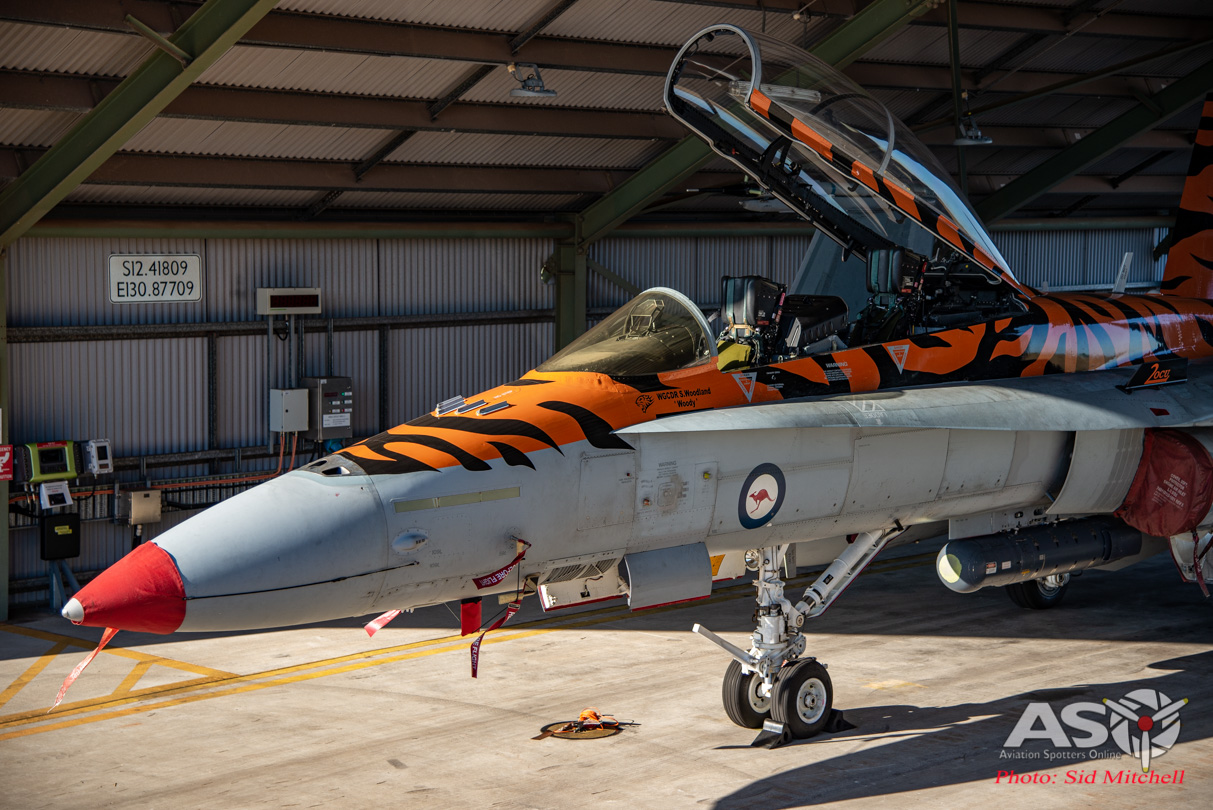





Nice work Sid!
Cheers Barrie, and no doubt you will see her in person – pretty hard to miss as we drive past the museum. Will be open for the Open Cockpit Day each year also I understand….Sid